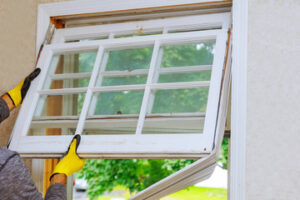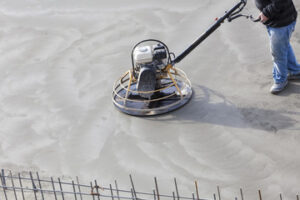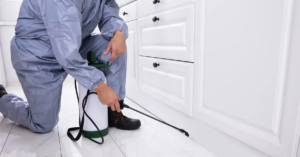Getting fit requires a well-rounded program of strength and aerobic exercise. Fitness also involves an increased work capacity across broad times and modal domains.

To fuel your workout, eat the right foods. Your body needs carbohydrates for energy, protein to build and repair muscles, healthy fats for cellular signaling, and nutrients like vitamins and minerals. Visit chaselynnwilliams.com to learn more.
Protein is a macronutrient that helps make up our muscles, hair, skin, blood, hormones and enzymes. It is important for the health of everyone, but especially so for those that are active. During exercise you are essentially breaking down muscle fibers and that damage requires protein to repair. This is why you often see people at the gym eating protein bars or drinking a whey shake after their workouts.
Protein plays a number of important roles in the body, from transporting messages and carrying out the instructions encoded in DNA to repairing and protecting essential organs and cells. In addition, protein is an important source of energy and can provide a significant amount of our overall daily energy intake.
Despite the importance of dietary protein, research in this area is relatively limited and inconsistent. Nevertheless, it is well known that the timing of protein ingestion has a significant impact on both strength and hypertrophy-related adaptations to resistance exercise. Furthermore, a recent position stand from the International Society of Sports Nutrition provides an updated review and recommendations for dietary protein intakes for physically active individuals.
It is recommended that a high protein diet be consumed in the hours immediately before and after resistance exercise in order to maximize muscle protein synthesis. Moreover, it has been found that protein ingestion can enhance recovery from resistance exercise by increasing the rate of carbohydrate resynthesis and by providing amino acids needed to elicit the anabolic response to exercise.
Other studies have shown that protein supplementation can improve muscular endurance by enhancing glycogen resynthesis. However, these results are not consistent and it is likely that other factors such as the duration of the exercise and training program, nutritional habits, dosing protocols, and energy and macronutrient intake play a role in these improvements.
It is also worth noting that consuming high amounts of protein can cause unwanted side effects such as gas, bloating, water retention and excess weight gain. Generally, the most beneficial way to consume protein is to get it from whole foods such as dairy products and lean meats.
Carbohydrates
Carbohydrates are a key fuel source for exercise. When consumed in the right amounts, they provide energy for workouts and support muscle protein synthesis. They also replenish liver glycogen stores, a process that supports future energy availability. For these reasons, carbohydrate is recommended after exercise to optimize recovery.
Carbs are also important for maintaining energy levels throughout the day. They are most commonly found in the form of sugars, fiber and starches. The healthiest sources of carbohydrates are complex, unprocessed foods like whole grains, fruits and vegetables. In comparison, less healthy carbs are processed foods and sweets that can cause a rapid rise in blood glucose.
A common demonization of carbs is that they contribute to body fat storage and lead to overeating. However, the characterization of carbs as fat-producing often depends on the type and quantity of carbohydrate consumed. Carbohydrates from whole grains, legumes and vegetables are important for the body because they contain fiber that promotes a feeling of fullness while lowering blood sugar and cholesterol.
The best carbohydrate sources are complex carbohydrates, which are made of many sugar units bonded together. These include beans and legumes, such as black beans, chickpeas, lentils and lima beans. Vegetables, such as corn and cooked dry beans or peas are also high in complex carbohydrate. Foods containing these carbohydrates are typically low in fat.
Although the exact role of carbohydrate in strength training has yet to be fully elucidated, studies show that higher carb intakes have ergogenic effects in some strength-training exercises. For instance, a study that compared a group of athletes to a control group showed that consuming more carbohydrates resulted in higher peak power output and isometric knee extension strength during three sets of 15 repetitions of 50 maximal isokinetic knee extensions. Nevertheless, this effect is likely mediated by training volume, as no positive effects have been observed in studies with lower than 10 repetitions. Other studies have also shown that carbohydrate supplementation enhances short-term performance in high-volume strength-training workouts. Moreover, consistent evidence shows that populations with exceptional longevity tend to eat diets dominated by plant-based carbohydrate foods.
Fats
Fat is a crucial energy source for the body. It is needed to build cell membranes and the sheaths around nerve cells, to help clot blood and to help absorb certain vitamins and minerals. It also provides a source of energy during exercise. The energy from fat is released slowly during exercise, which helps you maintain a steady pace and reduce the risk of muscle fatigue. Fat is an important part of a balanced diet and should make up about 30 percent of your daily calories.
Athletes should ideally get most of their fats from vegetable sources rather than animal products. This is because the fatty acids in plant-based fats are less likely to promote cardiovascular disease, a major cause of death in athletes.
While many people have a negative view of fat, it is not necessarily unhealthy. Your body needs fat in order to function properly and for you to be able to perform your favorite physical activities. When eating a healthy diet, the dietary fat you consume should come mostly from unsaturated fats. It is also important to avoid consuming fats with a high saturated fat content and trans fats.
The physiology, dietary needs and food sources of fatty acids have received a great deal of attention from researchers over the last decade. The effects of manipulating dietary fat as a percentage of total calorie intake on health and performance have been widely varying. Athletes need to be aware of this variability in dietary fats, as they are unique among the general population in their specific nutritional requirements. This section reviews the biochemistry and physiology of dietary fats, their role in the body, potential benefits and risks and practical suggestions for incorporating them.
Vegetables
Vegetables are nutrient-dense foods that provide important vitamins, minerals and carbohydrates. They’re also low in calories and fat, making them a key component of a healthy diet and weight loss plan. Whether you’re an athlete or just trying to maintain your current health, it is important to include vegetables in your daily meals.
Vegetables can be grouped according to the edible part of the plant: leaves (lettuce, spinach, kale), stems (broccoli, celery), root veggies (carrots, onions), and bulb veggies (potatoes). They are important sources of fibre, and contain essential micronutrients such as potassium, folate and vitamin C.
Leafy vegetables are high in folic acid, which helps prevent birth defects. They are also rich in antioxidants that help to protect cells from damage. They are also a great source of vitamin A and potassium.
Non-starchy vegetables are low in calories and can be used to add bulk to meals. They are also high in fiber and are important for weight loss, maintaining blood sugar levels, and digestive health. They can be added to breakfast, lunch and dinner to add texture and variety. Try adding a cup of bell peppers to an omelet, cucumber salad at lunch or half of a stuffed squash for dinner.
The USDA recommends eating 1 to 4 cups of vegetables per day. This is equivalent to 5 to 9 servings per week. A serving is defined as a cup or half cup of raw vegetables or 2 to 3 tablespoons of cooked vegetables.
Vegetables are rich in a wide array of nutrients, including potassium, dietary fibre, folate and vitamin A, vitamin C, and vitamin K. They are also an excellent source of phytochemicals which can improve immune function, reduce inflammation and lower the risk for heart disease. The dietary fibre in vegetables can slow digestion which makes people feel fuller for longer and is important for managing weight. However, it is best to avoid fibrous vegetables close to exercise as they may cause gastrointestinal symptoms such as bloating, diarrhoea and constipation. If you’re increasing your vegetable intake, do it gradually and ensure enough fluids are consumed throughout the day to minimise these symptoms.








